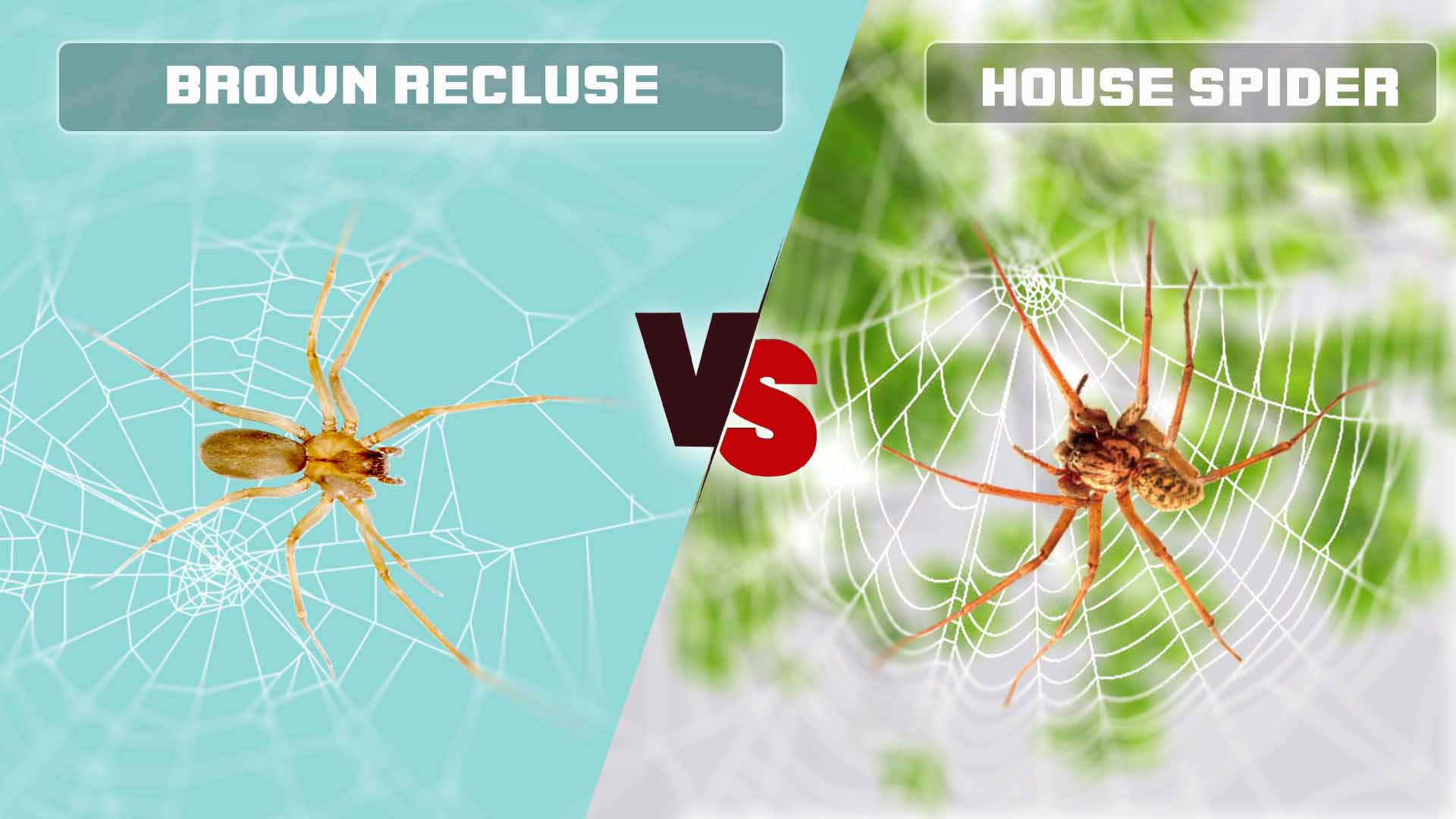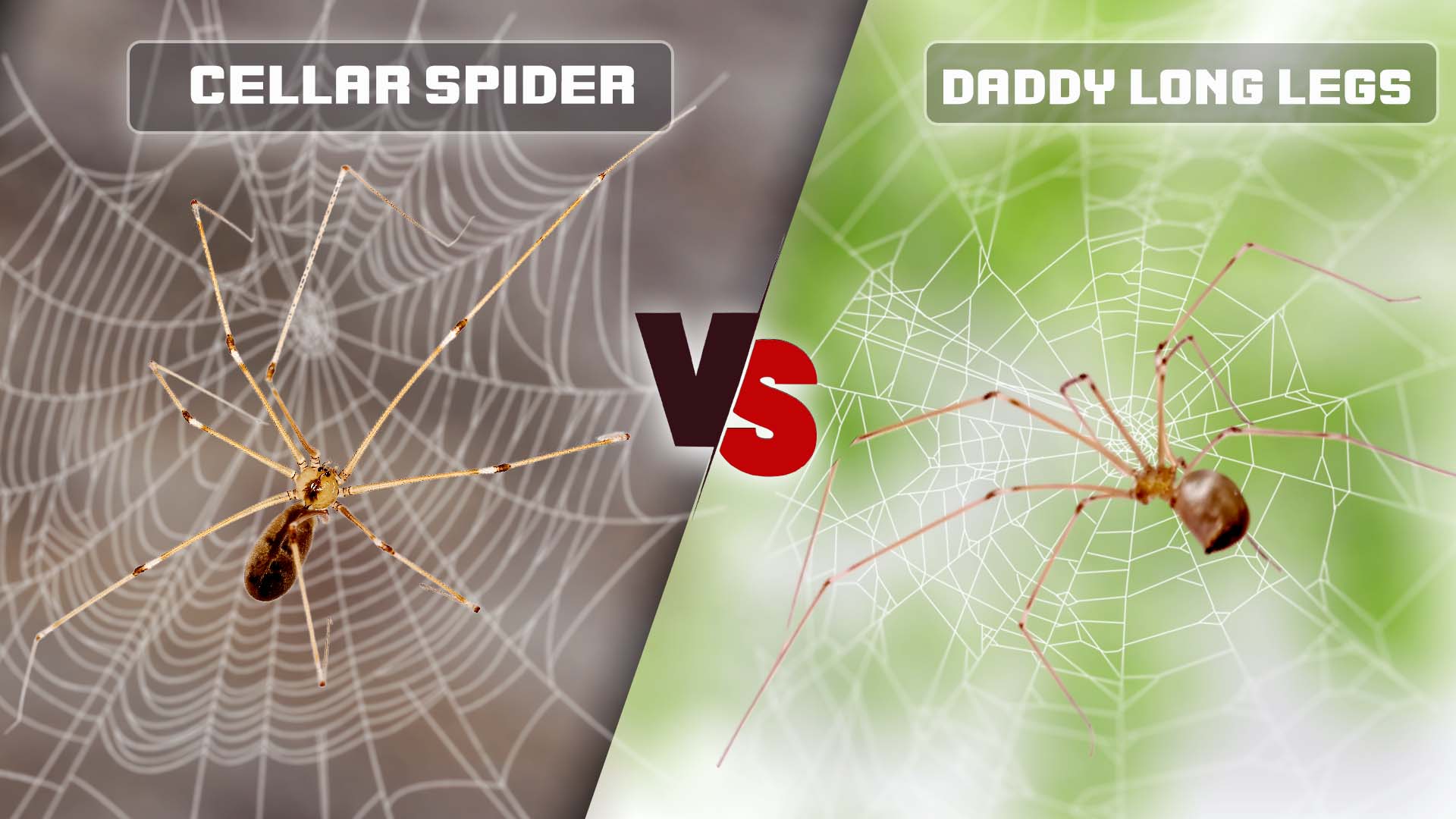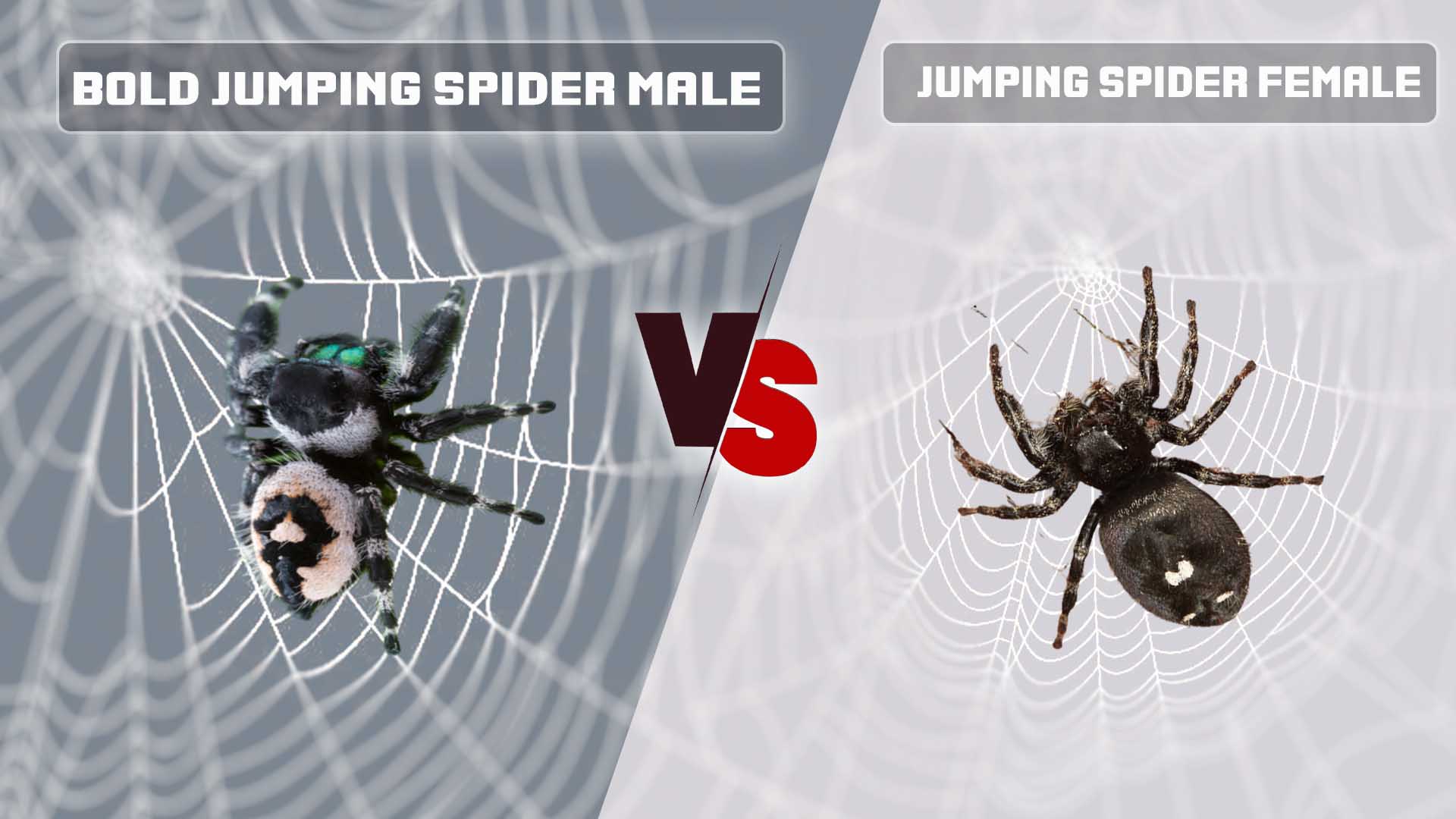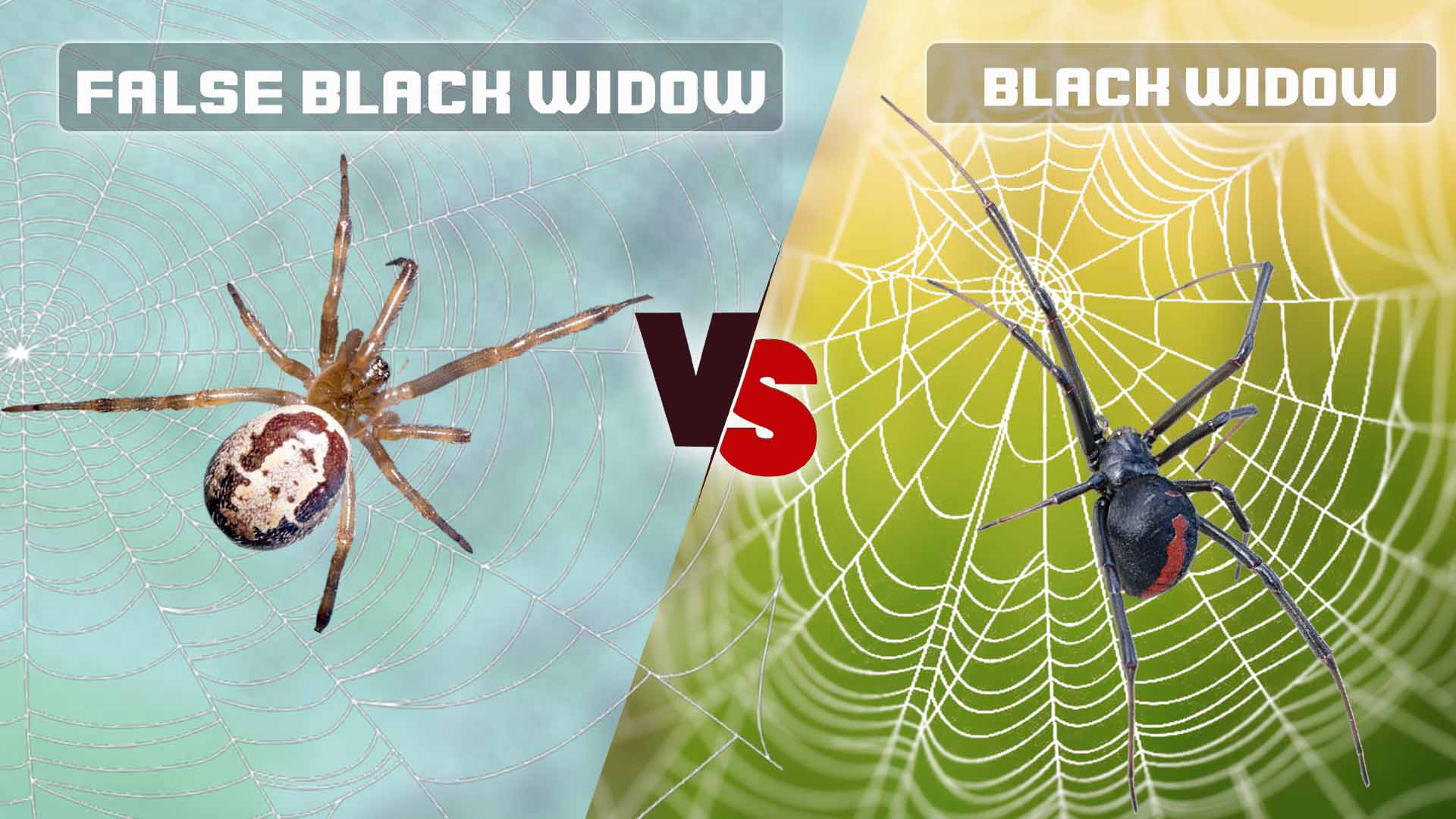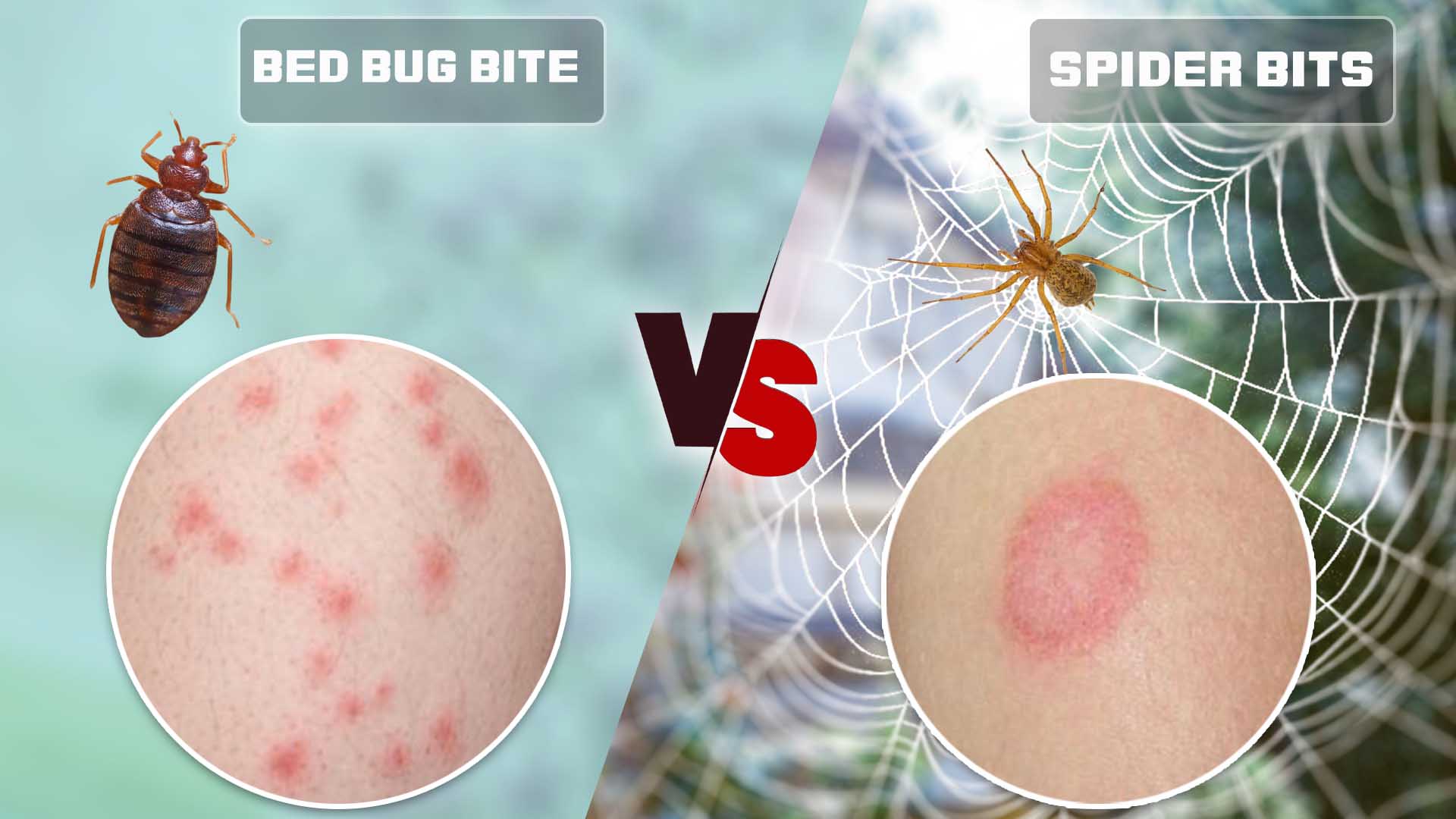Spiders are a common sight in many households, but not all of them are created equal. Two spider species that often draw attention due to their distinctive characteristics and, in some cases, concerns about their potential danger are the Brown Recluse and the House Spider.
Here we will discuss the key differences between these two arachnids to help you identify them and understand their behaviors.
Comparing Brown Recluse vs. House Spider
Brown Recluse and House Spiders differ in size, with Brown Recluses being smaller at around 0.25-0.5 inches, while House Spiders are slightly larger, though they may appear bulkier due to their longer legs. Brown Recluses sport a distinct violin-shaped marking on their cephalothorax and typically have a brown hue, whereas House Spiders come in various colors, often pale yellow or beige. Location-wise, Brown Recluses prefer secluded, dry areas in the United States, while House Spiders are ubiquitous indoors globally. Their behavior is non-aggressive, with Brown Recluses more nocturnal, and their venom levels vary, with Brown Recluses being of greater concern due to their potential for necrotic bites.
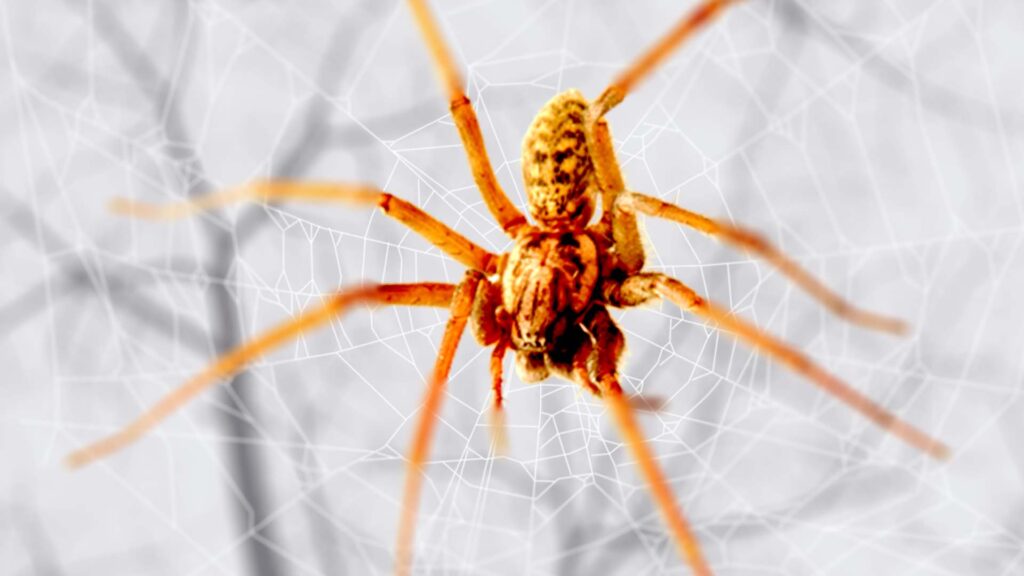
| Characteristic | Brown Recluse Spider | House Spider |
| Scientific Name | Loxosceles reclusa | Various species, e.g., Tegenaria domestica |
| Appearance | – Light to medium brown | – Variable colors, often brown or gray |
| Size | – About 0.25 to 0.5 inches (body length) | – Approximately 0.2 to 1 inch (body length) |
| Body Shape | – Oval-shaped abdomen | – Generally round or elongated abdomen |
| Legs | – Long and slender with fine hairs | – Usually shorter and less slender |
| Web Construction | – Irregular, messy webs | – Orb-shaped, organized webs |
| Habitat | – Found in undisturbed, dark places | – Commonly found in homes and buildings |
| Geographic Range | – Mostly in the central and southern US | – Widespread, found globally |
| Venomous Bite | – Venomous, with cytotoxic effects | – Generally not considered dangerous |
| Bites and Symptoms | – Painful bites, may lead to necrosis | – Bites usually cause mild irritation |
| Behavior | – Shy and nocturnal | – Generally active day and night |
| Identification Challenges | – Distinctive violin-shaped mark on cephalothorax | – Lacks distinctive markings |
| Importance in Spider Bites | – Infamous for causing necrotic wounds | – Rarely implicated in severe bites |
Differences Between Brown Recluse vs House Spider
Size Differences
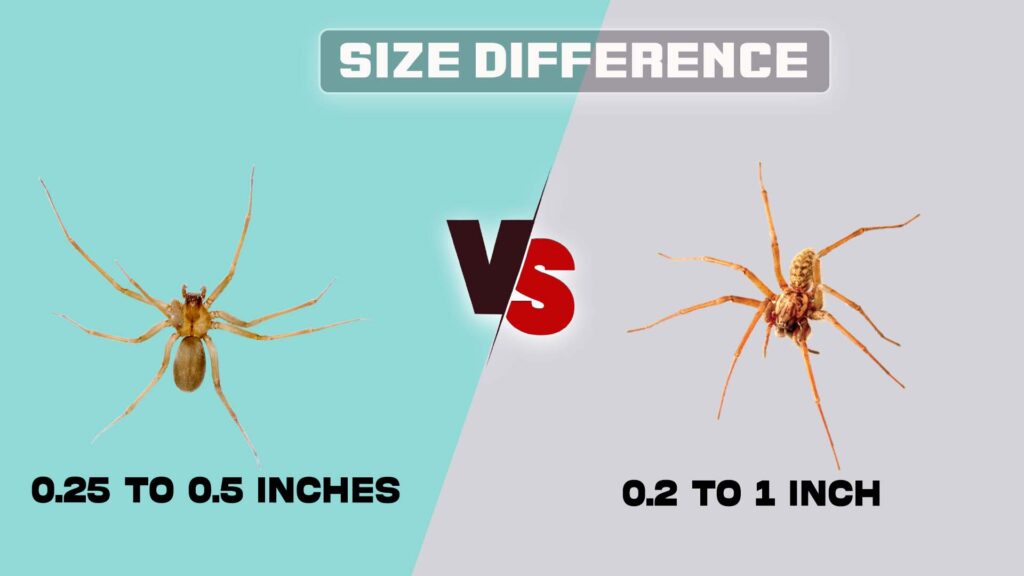
One of the most noticeable differences between these two spiders is their size. Brown Recluse spiders are typically smaller, measuring around 0.25 to 0.5 inches (6 to 12 mm) in body length. House Spiders, on the other hand, tend to be larger, with a body length ranging from 0.25 to 0.4 inches (6 to 10 mm) but can appear more substantial due to their longer legs.
Coloration Differences
Coloration is another distinguishing feature. Brown Recluse spiders have a characteristic violin-shaped marking on their cephalothorax (the front part of their body), which gives them their alternative name, “fiddleback spider.” They are typically light brown to dark brown in color. House Spiders, in contrast, come in a variety of colors, but they are often pale yellow or beige.
Brown Recluse vs. House Spider: Leg Length
The length of their legs can also help you differentiate between the two. Brown Recluse spiders have relatively short legs compared to their body size. House Spiders, conversely, have longer legs relative to their body, which can make them appear more elongated and less stocky.
Location and Habitat
Brown Recluse spiders are typically found in regions of the United States, particularly in the south and central areas. They prefer secluded and dry environments, such as attics, basements, and crawl spaces. House Spiders, as their name suggests, are commonly found indoors throughout the world. They tend to inhabit webs in corners, under furniture, or in any suitable nooks and crannies.
Brown Recluse vs. House Spider: Appearance
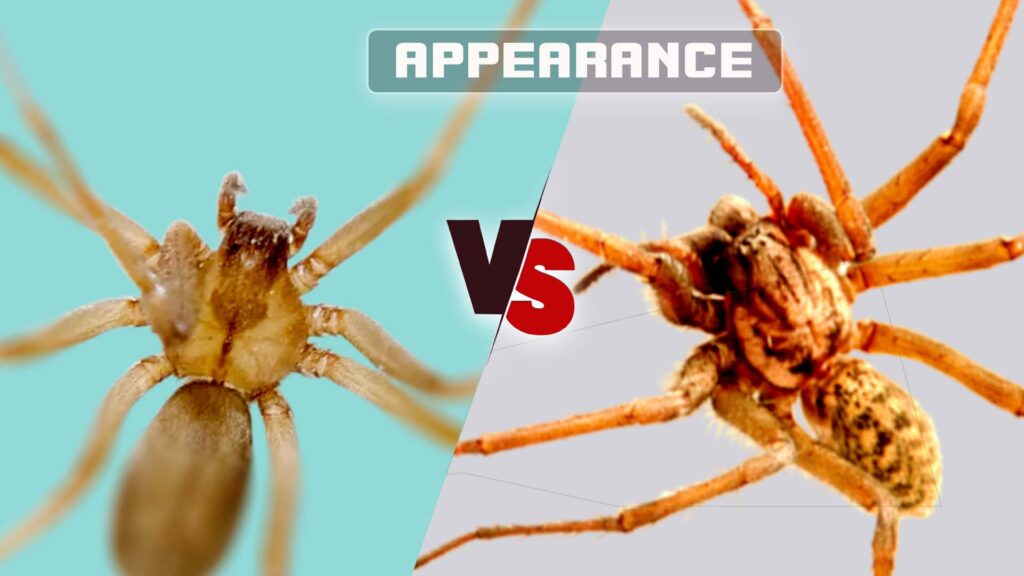
While the violin-shaped marking on the Brown Recluse’s cephalothorax is a key feature, it’s essential to look at the overall appearance. Brown Recluse spiders have a more uniform coloration, and their legs are often lighter in color than their body. House Spiders have a less distinct pattern and can vary in color and markings.
Lifespan and Reproduction
Both spider species have a similar lifespan, typically ranging from one to two years. They reproduce by laying eggs, but their egg sacs and mating behaviors can vary.
Brown Recluse vs. House Spider: Behavior
Brown Recluse spiders are known for their reclusive behavior, often hiding during the day and becoming active at night. They are not aggressive and typically only bite when provoked or threatened. House Spiders are also generally non-aggressive and tend to retreat when confronted.
Brown Recluse vs. House Spider: Venom Level
One of the most significant concerns people have about the Brown Recluse is its venom. While their bites can be painful and may cause necrotic skin lesions in some cases, severe envenomations are relatively rare. House Spiders are not considered medically significant, and their bites typically result in mild, localized discomfort.
Brown Recluse Vs House Spider: Bite
There compare the bites of Brown Recluse spiders and House Spiders:
Brown Recluse Spider Bite:
- Symptoms: Brown Recluse spider bites can lead to various symptoms, including pain, redness, itching, and swelling at the bite site.
- Necrosis: In some cases, a more severe reaction may occur, resulting in necrotic skin tissue, which can take weeks or even months to heal. However, it’s important to note that necrotic reactions are relatively rare.
- Severity: While Brown Recluse bites can be painful and may cause localized tissue damage, severe systemic reactions are uncommon.
House Spider Bite:
- Symptoms: House Spider bites are generally considered harmless and typically result in minor symptoms such as localized pain, redness, and itching.
- Severity: Severe reactions to House Spider bites are exceedingly rare, and the venom of House Spiders is not medically significant.
The bites of Brown Recluse spiders are of greater concern due to their potential for necrotic reactions, but such severe bites are relatively rare. House Spider bites, on the other hand, are generally harmless and rarely cause serious symptoms. If you suspect you’ve been bitten by a spider and experience severe symptoms, it’s advisable to seek medical attention to rule out any complications and receive appropriate treatment.
Identification The Brown Recluse and House Spider
Identifying Brown Recluse spiders (Loxosceles reclusa) and House Spiders (commonly various species of the genus Parasteatoda or Achaearanea) can be challenging but essential, especially if you want to distinguish between these two common arachnids. Here are some key features to help you identify them:
Brown Recluse Spider Identification:
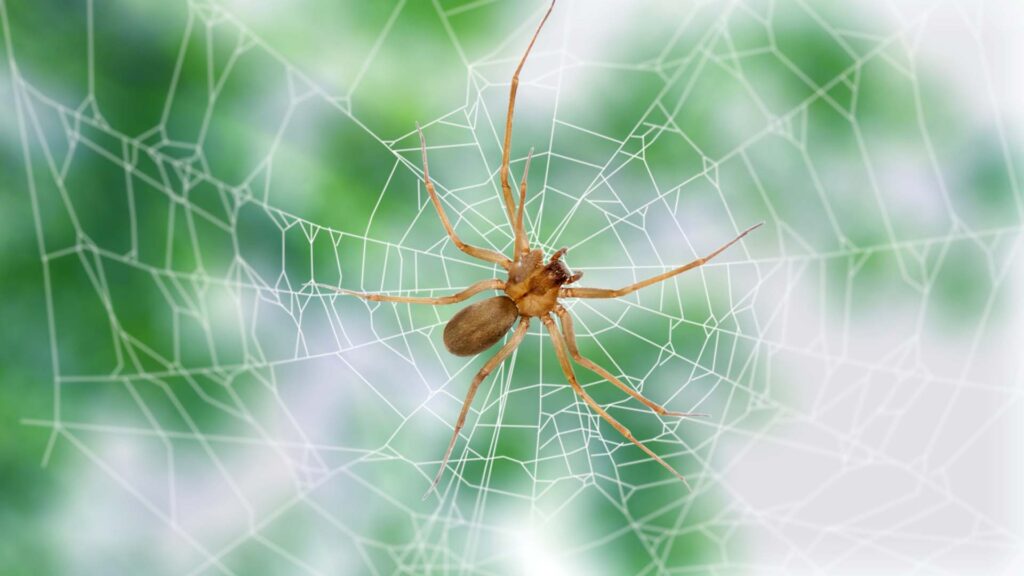
Size: Brown Recluse spiders are relatively small, with a body length typically ranging from 0.25 to 0.5 inches (6 to 12 mm).
Coloration: Look for a distinctive violin-shaped marking on their cephalothorax (the front part of their body). They are typically light to dark brown in color, and this marking gives them the nickname “fiddleback spider.”
Legs: Brown Recluse spiders have relatively short legs compared to their body size. Their legs are often lighter in color than their body.
Location and Habitat: These spiders are primarily found in specific regions of the United States, particularly in the south and central areas. They prefer secluded, dry environments like attics, basements, and crawl spaces.
Behavior: Brown Recluse spiders are nocturnal and reclusive. They often seek shelter during daylight hours and become active after nightfall. They are not aggressive and typically only bite when provoked or threatened.
Venom: Brown Recluse spiders are known for their venom, which can cause pain, redness, itching, and, in some cases, the formation of necrotic skin lesions. However, severe envenomations are relatively rare.
House Spider Identification:
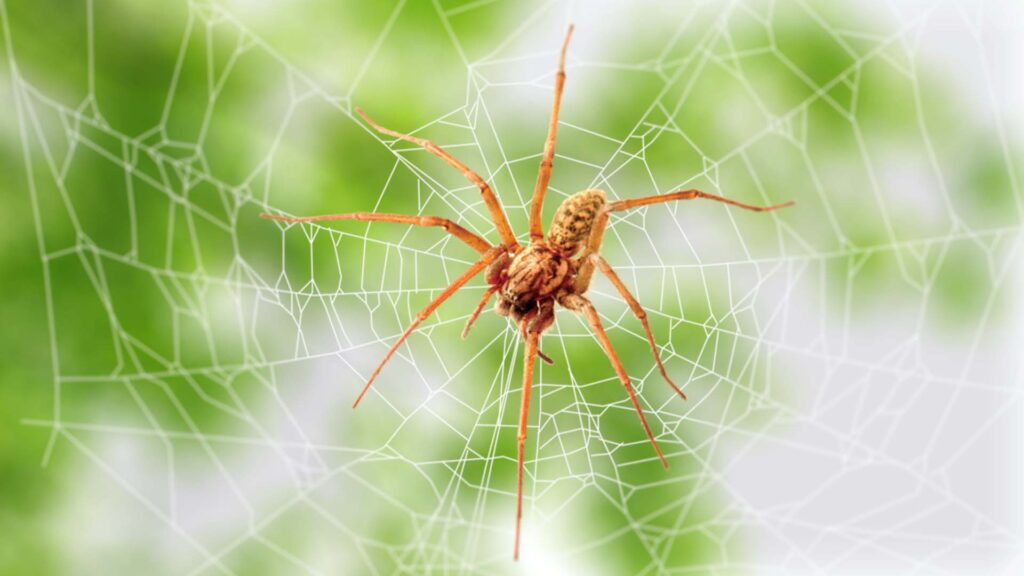
Size: House Spiders are slightly larger than Brown Recluse spiders, with a body length ranging from 0.25 to 0.4 inches (6 to 10 mm). They may appear more substantial due to their longer legs.
Coloration: House Spiders come in various colors, but they are often pale yellow or beige. They lack the distinctive violin-shaped marking found on Brown Recluse spiders.
Legs: House Spiders have longer legs relative to their body, which can make them appear more elongated and less stocky.
Location and Habitat: As their name suggests, House Spiders are commonly found indoors throughout the world. They often inhabit webs in corners, under furniture, or in any suitable nooks and crannies.
Behavior: House Spiders are generally non-aggressive and tend to retreat when confronted. They are not known for causing severe bites, and their venom is not medically significant.
Accurate identification of Brown Recluse spiders and House Spiders involves considering their size, coloration, leg length, location, habitat, behavior, and potential venomous effects. If you encounter a spider and are unsure of its identity, it’s best to exercise caution and avoid handling it.
Additional Related Spider Compare
Southern House Spider vs. Brown Recluse
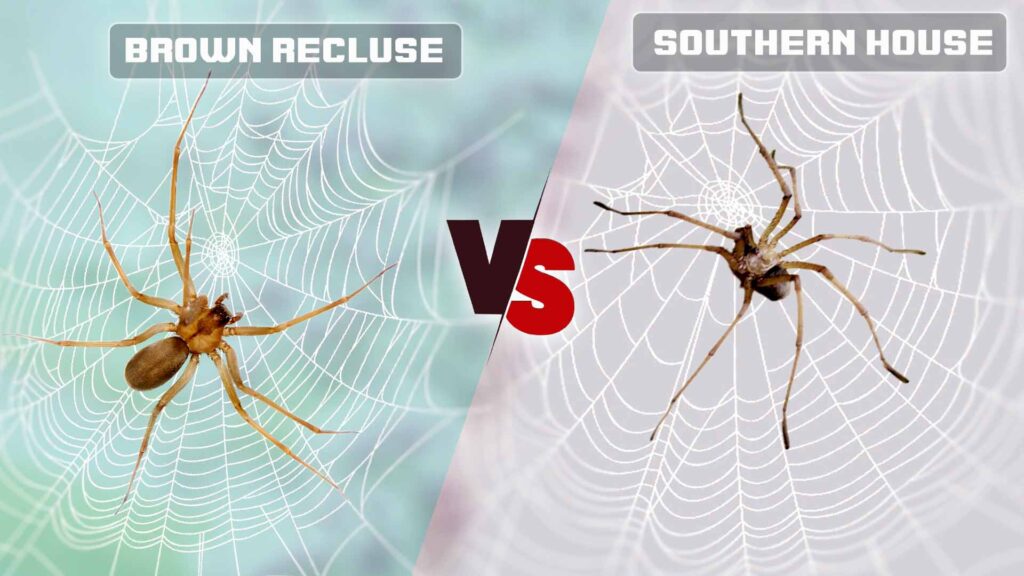
Southern House Spiders are generally larger than Brown Recluses. They often have a brown coloration with various markings, while Brown Recluses are known for their distinctive violin-shaped marking. Southern House Spiders are commonly found indoors, where they build webs. In contrast, Brown Recluses are typically located in the southern and central United States, favoring secluded, dry habitats. Their behavior differs as well, with Southern House Spiders actively building webs, while Brown Recluses tend to hide in secluded spots.
Male Southern House Spider vs. Brown Recluse
Male Southern House Spiders are generally larger than male Brown Recluses. They often have a brown coloration with various markings, while Brown Recluses are known for their distinctive violin-shaped marking. Male Southern House Spiders are commonly found indoors, where they build webs. In contrast, Brown Recluses are typically located in the southern and central United States, favoring secluded, dry habitats. Their behavior differs as well, with Male Southern House Spiders actively building webs, while Brown Recluses tend to hide in secluded spots.
Female Southern House Spider vs. Brown Recluse
Female Southern House Spiders are typically larger than female Brown Recluses. They often have a brown coloration with various markings, while Brown Recluses are known for their distinctive violin-shaped marking. Female Southern House Spiders are commonly found indoors, where they build webs. In contrast, Brown Recluses are typically located in the southern and central United States, favoring secluded, dry habitats. Their behavior differs as well, with Female Southern House Spiders actively building webs, while Brown Recluses tend to hide in secluded spots.
Giant House Spider vs. Brown Recluse
Giant House Spiders are notably larger than Brown Recluses. They can have a leg span of several inches, while Brown Recluses are smaller, with a body length ranging from 0.25 to 0.5 inches. Giant House Spiders are typically brown and covered in hair, while Brown Recluses have a distinctive violin-shaped marking on their cephalothorax. Giant House Spiders are often found indoors but are not considered dangerous to humans, whereas Brown Recluses, though reclusive, have the potential for necrotic bites and are primarily found in specific regions of the southern and central United States.
Aggressive House Spider vs. Brown Recluse
The Aggressive House Spider is larger than the Brown Recluse and generally has a more robust build. It is not typically aggressive toward humans, despite its name. Aggressive House Spiders are not known to cause severe bites. In contrast, Brown Recluses, though reclusive and not inherently aggressive, can deliver bites that have the potential for necrotic effects, though such bites are relatively rare.
Domestic House Spider vs. Brown Recluse
The Domestic House Spider is typically larger than the Brown Recluse and lacks the distinctive violin-shaped marking. Domestic House Spiders build tangled webs and are not considered dangerous to humans. Brown Recluses, on the other hand, are known for their venomous bites, although severe envenomations are uncommon.
Eastern House Spider vs. Brown Recluse
Eastern House Spiders are generally larger than Brown Recluses. They construct webs indoors but are not medically significant to humans. Brown Recluses, known for their violin-shaped marking, are primarily found in specific regions of the southern and central United States and have the potential for necrotic bites, although such bites are rare. You may be interest to know the differences between
Eastern House Spiders are generally larger than Brown Recluses. They construct webs indoors but are not medically significant to humans. Brown Recluses, known for their violin-shaped marking, are primarily found in specific regions of the southern and central United States and have the potential for necrotic bites, although such bites are rare. You may be interested to know the differences between Brown Recluse and Grass Spider.
Conclusion:
While Brown Recluse and House Spiders may share some similarities in appearance, understanding their differences in size, coloration, behavior, and habitat is crucial for accurate identification and to alleviate any concerns about potential bites. Remember that both spider species are generally non-aggressive, and bites are relatively rare occurrences.

